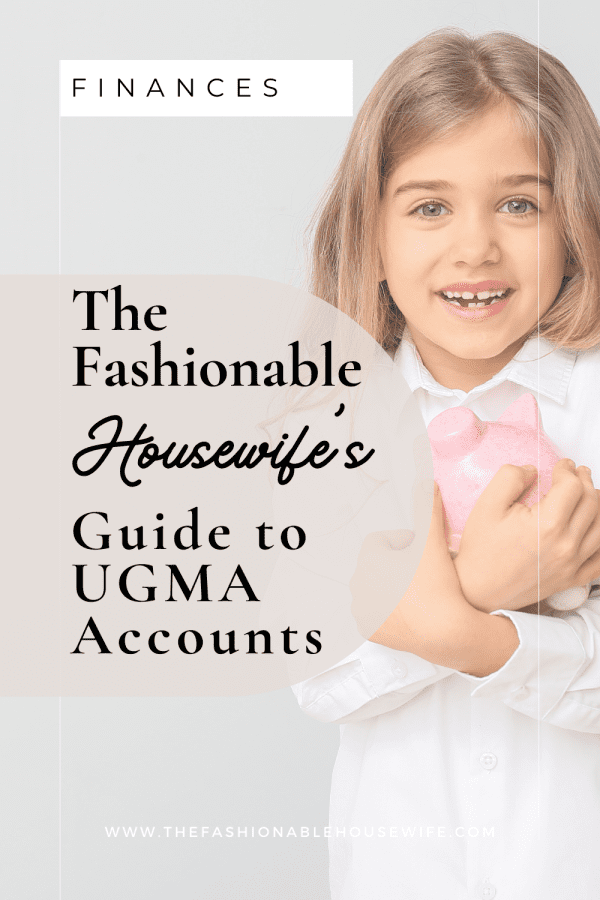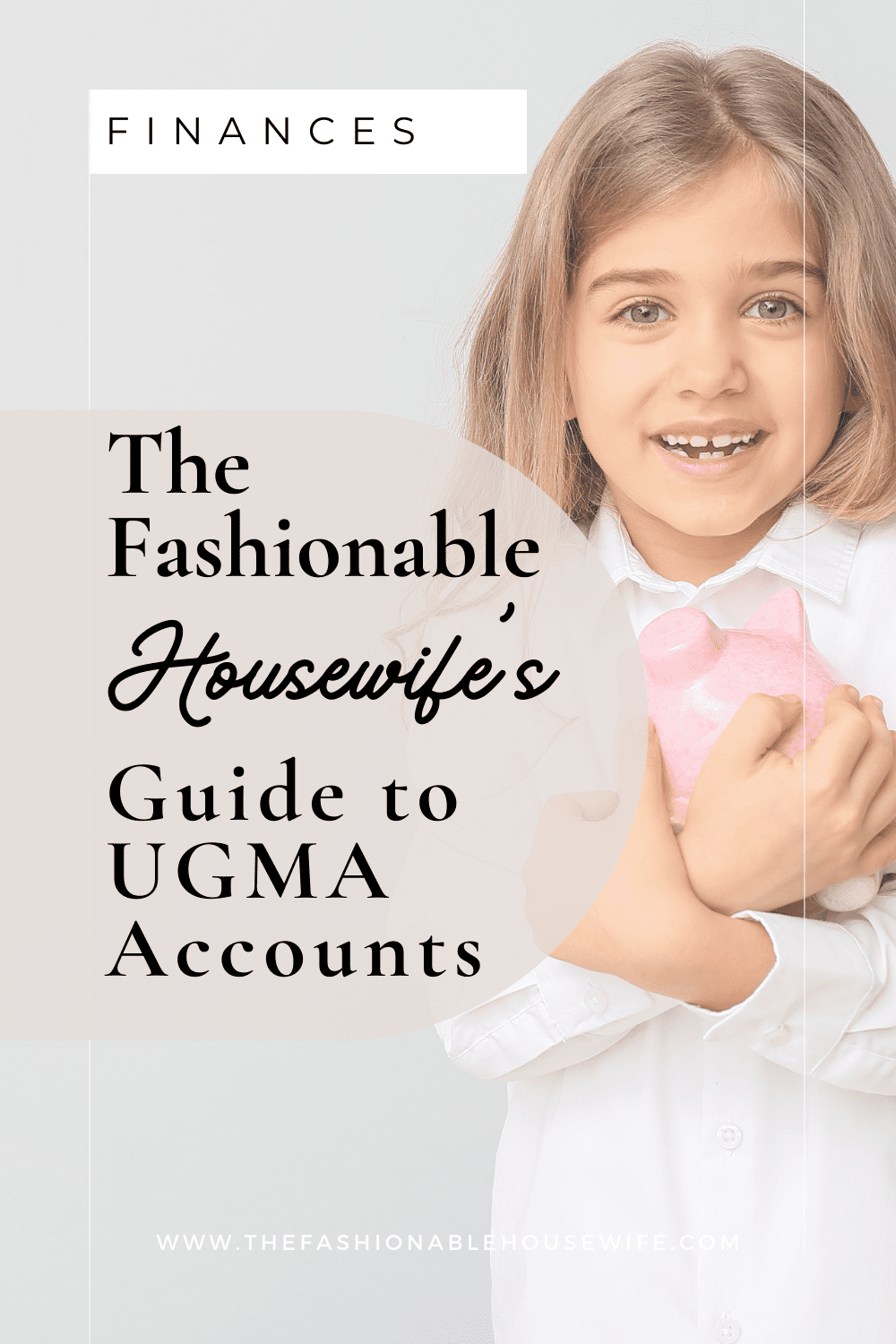The Fashionable Housewife’s Guide to UGMA Accounts

Planning for your child’s financial future is a crucial step in ensuring they have the resources needed for education, major life events, or to kickstart their adult lives. One effective vehicle for building this financial foundation is through a Uniform Gifts to Minors Act (UGMA) account. This article explores the benefits of UGMA accounts for kids and offers strategies to maximize their potential.
Understanding UGMA Accounts
A UGMA account is a custodial account that allows parents, guardians, or other adults to transfer financial assets to a minor without the need to establish a formal trust. The custodian manages the account until the minor reaches the age of majority, which varies by state but is typically 18 or 21. At that point, the assets become the property of the beneficiary, who can use them for any purpose like savings for college.
Advantages of UGMA Accounts for Kids
- Flexibility in Asset Transfers: UGMA accounts can hold a variety of financial assets, including cash, stocks, bonds, and mutual funds. This flexibility allows for a diversified investment approach tailored to the minor’s future needs.
- Simplicity and Ease of Setup: Establishing a UGMA account is straightforward and can be done through most financial institutions or brokerage firms. There are no contribution limits, making it accessible for various financial situations.
- No Contribution Limits: Unlike some other savings accounts, UGMA accounts for kids do not have annual contribution limits. However, it’s important to be mindful of federal gift tax rules, which may require reporting gifts over a certain amount.
- Tax Benefits: The first $1,100 of unearned income in a UGMA account is tax-free, and the next $1,100 is taxed at the child’s rate, which is typically lower than the parent’s rate. This can result in tax savings compared to holding the assets in the parent’s name.
Considerations and Drawbacks
While UGMA accounts offer several benefits, there are important considerations to keep in mind:
- Irrevocable Gifts: Contributions to a UGMA account are irrevocable, meaning they cannot be taken back once given. The assets legally belong to the minor and must be used for their benefit.
- Impact on Financial Aid: Assets in a UGMA account are considered the property of the student and can significantly affect eligibility for financial aid, as they are assessed at a higher rate than parental assets.
- Limited Control Upon Majority: Once the minor reaches the age of majority, they gain full control over the account and can use the funds as they see fit, which may not align with the original intentions of the custodian account manager.

Strategies for Maximizing UGMA Accounts
To make the most of a UGMA account, consider the following strategies:
- Start Early and Contribute Regularly: The power of compounding means that the earlier you start contributing, the more the investments can grow over time. Regular contributions can build a substantial nest egg by the time the minor reaches adulthood.
- Diversify Investments: Invest in a mix of asset classes to balance risk and return. Diversification can help protect the account from market volatility and enhance potential growth.
- Be Mindful of Tax Implications: While there are tax advantages, be aware of the “kiddie tax” rules that may apply if the unearned income exceeds certain thresholds. Consulting with a tax professional can help navigate these complexities.
- Communicate with the Beneficiary: As the minor approaches the age of majority, discuss the purpose and intended use of the funds to encourage responsible financial decisions.
Conclusion
UGMA accounts for kids can be a valuable tool in building a financial foundation for your child’s future, offering flexibility and potential tax benefits. However, it’s essential to consider the implications, including the impact on financial aid and the transfer of control upon reaching the age of majority. By understanding these factors and implementing strategic approaches, you can effectively utilize UGMA accounts to support your child’s long-term financial well-being

